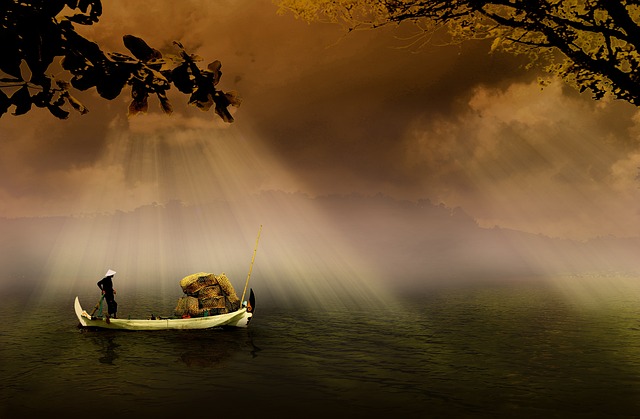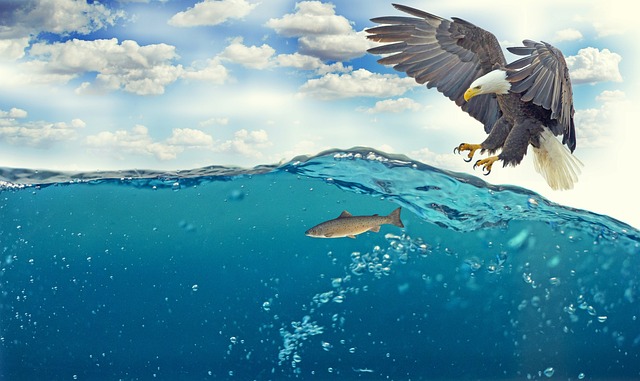So, you’ve decided to venture into the world of fishing. Whether you’re a beginner or a seasoned angler, having a well-stocked fishing tackle box is absolutely essential. But what exactly should be in that box? Well, get ready to find out, because we’ve got all the details right here.
When it comes to putting together a fishing tackle box, there are a few key items that you simply can’t do without. First and foremost, you’ll need a variety of fishing gear, such as hooks, sinkers, and bobbers. These are the basic tools of the trade and will help you get started on your fishing journey. Additionally, it’s important to pack a selection of different fishing lines, as well as a pair of needle-nose pliers for easy hook removal. Of course, no fishing tackle box would be complete without a good supply of bait. Whether you prefer live bait or artificial lures, make sure to have a few options on hand to increase your chances of catching that big one.
This is just a taste of what you can expect to find in a well-stocked fishing tackle box. In our upcoming article, we’ll delve deeper into each of these items, providing you with all the information you need to know to become a successful angler. So stay tuned and get ready to take your fishing game to the next level!
Choosing the Right Fishing Tackle Box
When it comes to fishing, having a well-stocked tackle box is essential. It not only allows you to organize and store all your fishing gear in one place, but it also ensures that you have all the necessary tools and equipment to make your fishing trips successful. But with so many options available, how do you choose the right fishing tackle box? Here are some considerations to keep in mind.
Considerations for Tackle Box Selection
-
Size: The size of the tackle box is an important factor to consider. It should be large enough to hold all your fishing gear, yet not too bulky or heavy to be easily transported. You should also consider the number of compartments and trays as more compartments allow for better organization.
-
Material: Tackle boxes are typically made from either plastic or metal. Plastic tackle boxes are lightweight, durable, and affordable, making them a popular choice for most anglers. Metal tackle boxes, on the other hand, are more durable and offer better protection against the elements. However, they can be heavier and more expensive.
-
Waterproofing: Fishing often involves exposure to water, so it’s important to choose a tackle box that is waterproof or at least water-resistant. This will protect your gear from getting wet and prevent rusting or damage.
-
Portability: Consider how you will be transporting your tackle box. If you prefer carrying it by hand, choose a tackle box with a comfortable handle. If you plan to hike or walk long distances to your fishing spot, you may want to consider a tackle bag or backpack-style tackle box for better mobility.
Different Types of Tackle Boxes
There are several types of tackle boxes available, each with its own advantages and disadvantages. Here are some of the most common types:
-
Tray Tackle Boxes: These are the traditional tackle boxes with multiple trays that fold out when opened. They offer good organization and are great for storing smaller tackle items like hooks, sinkers, and lures. However, they can be bulky and heavy.
-
Tackle Bags: Tackle bags are becoming increasingly popular among anglers. They are lightweight, portable, and offer plenty of compartments and pockets for organization. They also often come with shoulder straps or backpack straps for easy carrying.
-
Tackle Backpacks: Similar to tackle bags, tackle backpacks offer the convenience of a regular backpack with specialized compartments for tackle storage. They usually have more storage space than tackle bags and are a great option for anglers who need to carry larger items such as fishing rods.
-
Tackle Binders: Tackle binders are compact and portable, making them ideal for anglers who like to travel light. They feature plastic sleeves or pouches that hold individual tackle items. Tackle binders are especially popular among anglers who primarily use soft plastic baits.
Features to Look for in a Tackle Box
In addition to the type and size of the tackle box, there are several features that you should look for to ensure that it meets your needs:
-
Compartments and Trays: Look for a tackle box with adjustable dividers or removable trays to customize the storage space according to your fishing gear. This will help you keep everything organized and easily accessible.
-
Latch and Closure System: The latch and closure system should be secure and reliable to prevent accidental opening and protect your gear from falling out.
-
UV Protection: If you often fish in sunny areas, choosing a tackle box with UV protection can help preserve the quality and color of your lures and plastics.
-
Durability: A durable tackle box is important, especially if you fish in rugged environments or have a tendency to be rough with your gear. Look for tackle boxes made from high-quality materials that can withstand the wear and tear of fishing trips.
Must-Have Fishing Gear
Now that you have chosen the right tackle box, it’s time to fill it up with the must-have fishing gear. Whether you’re a beginner or an experienced angler, these essential items should always be on your fishing checklist.
Fishing Rods and Reels
A good fishing rod and reel are the foundation of any fishing gear collection. Choose a fishing rod and reel combo that is suitable for the type of fishing you will be doing. Consider factors such as the fishing technique, target species, and your own personal preference.
Fishing Line
A fishing line is what connects you to the fish. There are various types of fishing lines available, including monofilament, fluorocarbon, and braided lines. Each type has its own strengths and weaknesses, so choose the one that best suits your fishing needs.
Hooks and Sinkers
Hooks and sinkers are essential for bait presentation and getting your lure or bait to the desired depth. Make sure to stock your tackle box with a variety of hooks in different sizes and styles to accommodate different fishing techniques and target species.
Bobbers and Floats
Bobbers, also known as floats, are used to suspend baits at a specific depth and indicate when a fish has taken the bait. They come in various sizes and shapes, so choose the one that suits your fishing style.
Swivels and Snaps
Swivels and snaps are essential for attaching hooks, lures, and other terminal tackle to your fishing line. They provide flexibility and prevent line twist, making them an important component of your fishing gear.
Plastic Worms and Lures
Plastic worms and lures are versatile fishing baits that can attract a wide range of fish species. They come in various colors, sizes, and shapes, so experiment and find the ones that work best for your local fishing conditions.

This image is property of pixabay.com.
Essential Tools for Fishing
In addition to fishing gear, there are several tools that every angler should have in their tackle box. These tools are not only useful for various fishing tasks but also for handling fish safely and efficiently.
Pliers and Cutters
Fishing pliers and cutters are essential for removing hooks, cutting fishing line, and bending wire. Look for pliers with built-in line cutters for added convenience.
Fishing Scissors
Fishing scissors are useful for cutting fishing line, trimming knots, and removing tags from new fishing gear. Choose a pair of scissors with serrated blades for added durability.
Hook Removers
Hook removers are designed to safely and easily remove hooks from a fish’s mouth without causing harm. They come in various sizes and styles, so choose one that is suitable for the size of fish you typically catch.
Fish Grippers
Fish grippers are used to securely hold fish while you remove the hook or take photos. Look for fish grippers with non-slip handles and a sturdy mechanism to ensure a strong grip on the fish.
Scale and Measuring Tape
A scale and measuring tape are useful for measuring the size of your catch and ensuring compliance with fishing regulations. Choose a scale with a weight capacity suitable for the fish you are targeting.
Safety Equipment
Safety should always be a top priority when you’re out fishing. Here are some safety equipment items that should be included in your tackle box:
Life Jacket or Personal Flotation Device
If you’re fishing from a boat or in an area with deep water, wearing a life jacket or personal flotation device is crucial. Choose a life jacket that is comfortable to wear and approved by the appropriate safety authorities.
First Aid Kit
Accidents can happen while fishing, so it’s important to have a first aid kit on hand. Include items such as band-aids, antiseptic wipes, gauze pads, adhesive tape, and any necessary medications for allergies or pre-existing conditions.
Sunscreen and Insect Repellent
Protecting yourself from the sun’s harmful rays and pesky insects is important for your overall well-being. Pack sunscreen with a high SPF rating and insect repellent to keep yourself protected during long fishing trips.

This image is property of pixabay.com.
Extra Fishing Accessories
While not essential, these additional fishing accessories can enhance your fishing experience and make it more enjoyable:
Tackle Bag or Backpack
A tackle bag or backpack allows you to carry your fishing gear and tackle box more easily. Look for one with multiple compartments and pockets for better organization.
Fishing Hat and Sunglasses
A fishing hat with a wide brim provides shade and protects your face and neck from sunburn. Polarized sunglasses reduce glare and help you see fish and structures beneath the water’s surface.
Fishing Gloves
Fishing gloves provide protection against cuts and abrasions while handling fish or when handling rough fish species such as catfish. They also provide a better grip on wet and slippery surfaces.
Headlamp or Flashlight
A headlamp or flashlight is essential for night fishing or fishing during low-light conditions. It allows you to see clearly and helps you navigate safely in the dark.
Organization and Storage Solutions
Having an organized tackle box not only makes it easier to locate and access your fishing gear but also helps protect your gear from damage. Here are some organization and storage solutions to consider:
Tackle Trays and Dividers
Use tackle trays and dividers to separate and organize your fishing gear within your tackle box. This makes it easier to find specific items and prevents them from getting tangled or damaged.
Plano Boxes and Tackle Binders
Plano boxes and tackle binders are great storage solutions for lures, hooks, and other small tackle items. They are compact and portable, allowing you to easily carry them in your tackle box or fishing bag.
Tackle Box Labels
Labeling your tackle box compartments and trays can help you quickly locate specific items. Use waterproof labels or markers to ensure durability, especially if your tackle box is not waterproof.

This image is property of pixabay.com.
Maintaining and Repairing Fishing Gear
Proper maintenance and regular repairs are essential to keep your fishing gear in good working condition. Here are some tools and products that can help you maintain and repair your gear:
Fishing Line Conditioner
Fishing line conditioner helps prevent your fishing line from tangling, twisting, or deteriorating over time. It also improves casting distance and reduces friction.
Rig Disassembly Tool
A rig disassembly tool is useful for quickly and easily removing knots or tangles from your fishing line. It saves time and prevents frustration when retying your rigs.
Rod Tip Repair Kit
Accidental damage to your fishing rod’s tip can affect its performance. A rod tip repair kit allows you to quickly repair any breakage and get back to fishing without having to replace the entire rod.
Essential Fishing Knots
Knowing how to tie a variety of fishing knots is crucial for a successful fishing trip. Here are three essential fishing knots that every angler should master:
Palomar Knot
The Palomar knot is a strong and reliable knot for attaching hooks and lures to your fishing line. It is easy to tie and can be used with both monofilament and braided fishing line.
Trilene Knot
The Trilene knot is another popular knot for attaching hooks, swivels, and snaps to your fishing line. It is known for its strength and reliability, making it a favorite among anglers.
Improved Clinch Knot
The Improved Clinch knot is commonly used for securing fishing line to hooks, lures, and other terminal tackle. It is easy to tie and offers good strength and reliability.

Tips for Packing your Tackle Box
Now that you have gathered all the essential fishing gear, tools, and accessories, it’s time to pack your tackle box. Here are some tips to help you pack efficiently:
Prioritizing Essential Items
Place the most essential items, such as fishing rods, reels, hooks, and sinkers, in easily accessible compartments or trays. This way, you can quickly grab them when needed without having to dig through the entire tackle box.
Organizing by Fishing Technique
If you use different fishing techniques, consider organizing your tackle box accordingly. Group similar items together, such as lures for a specific fishing technique or hooks of similar sizes, to make it easier to find what you need.
Maximizing Space Efficiency
Use adjustable dividers and trays to maximize space efficiency. Arrange your tackle box in a way that minimizes wasted space and allows you to fit more gear without overcrowding.
Conclusion
A well-stocked tackle box is essential for any angler, whether you’re a beginner or an experienced fisherman. It not only ensures that you have all the necessary tools and equipment for a successful fishing trip but also helps keep your gear organized and protected. By choosing the right tackle box, packing it with essential fishing gear, tools, and accessories, and keeping it well-maintained, you’ll be well-prepared for any fishing adventure that comes your way. So grab your tackle box, head out to the water, and get ready for a memorable fishing experience!

